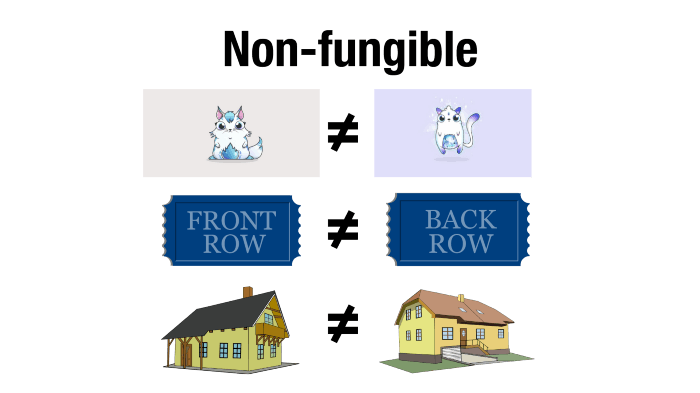Have you been struggling to understand fungible and non-fungible tokens?
I’ll guide you with simple words and detailed examples.
And at the end of this article, you’d be able to spot differences between fungible and non-fungible tokens.
Let’s go!
Fungible Tokens
Think of something valuable that can be exchanged for another valuable item of the same kind.
Simply put, fungible tokens are divisible assets that are not unique and can be exchanged for another asset of the same kind.
Bitcoin, Ethereum, and other cryptocurrencies are examples of fungible tokens.
Gold, stocks, and dollar bills are examples of fungible assets.

Non-Fungible Tokens
For an item to be non-fungible;
- It should be unique and
- Cannot be interchanged or divided into smaller units.
Therefore, non-fungible tokens are unique digital assets containing units of data stored on the blockchain.
It is considered unique because of the data stored on each token.
Different NFTs can store data relating to pictures, audio, video, or any other digital files.

Major Differences
Now that you’ve understood fungible and non-fungible tokens, let’s see the unique features that set them apart.
- Interchangeability
Fungible tokens are generally used for making payments and tracking balances.
On the other hand, non-fungible tokens are proof of ownership of digital assets.
The ownership proof in form of data stored on the blockchain enables you track the owners.
- Content Stored
Fungible tokens contain value (numerical worth) of a cryptocurrency like Bitcoin value.
Non-fungible tokens store units of data on top of an existing blockchain.
Like an artwork, ticket, or certificate.
- Technology Used
Fungible tokens have their own blockchain.
Good examples are Ethereum and Bitcoin.
On the other hand, non-fungible tokens are built on top of an existing blockchain.
Most NFTs are built on top of Ethereum, Solana, Zilliqa, Flow, Cardano, and Tezos.
- Ethereum Token Standard
Fungible tokens use ERC-20.
It’s a fungible token standard used to create fungible tokens on the Ethereum blockchain.
Non-fungible tokens use ERC-721.
Conclusion
Finally, it’s important to note that NFTs can be bought using several fungible tokens and currencies.
In my opinion, this is the bridge that connects both tokens.
Did you gain some experience with tokens from this article?
Follow me on Twitter.